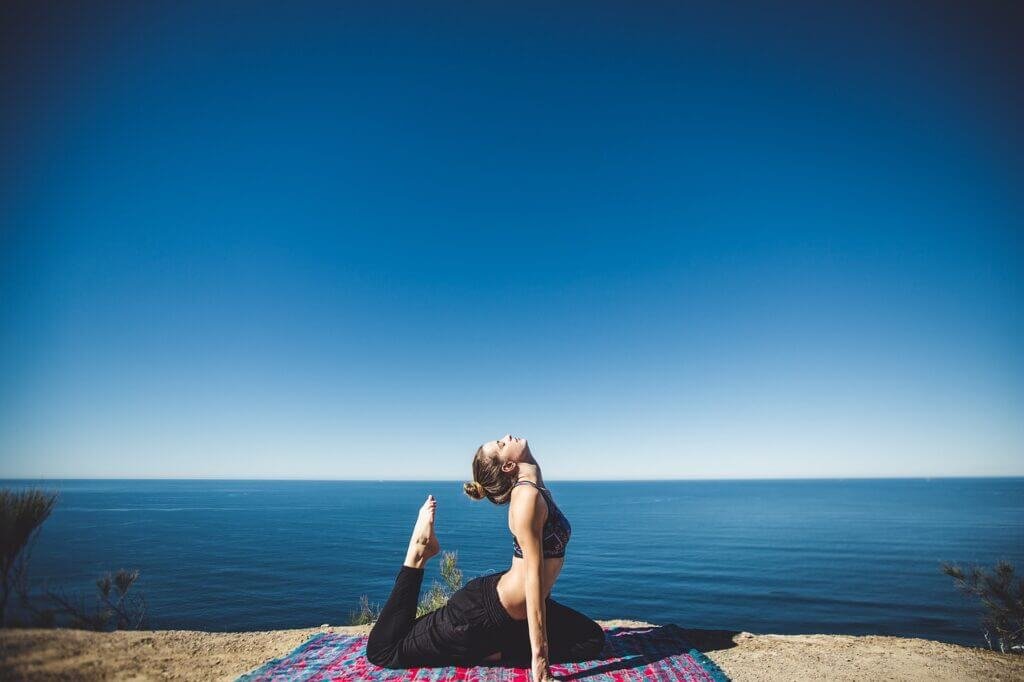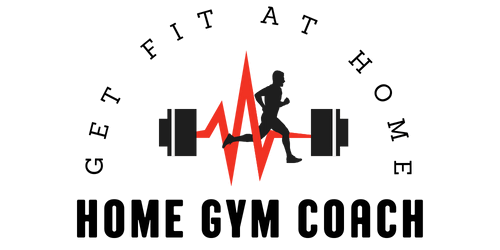Are you looking to enhance your flexibility without having to leave the comfort of your home? Look no further! In this article, we will explore effective ways for you to improve your flexibility through home gym workouts. Whether you are a beginner or an experienced fitness enthusiast, we have got you covered. Get ready to stretch, strengthen, and achieve a new level of flexibility right from your own living room.

Benefits of Flexibility
Flexibility is an essential component of overall fitness and plays a significant role in maintaining a healthy and active lifestyle. There are several benefits to developing and improving your flexibility.
Increased range of motion
One of the primary benefits of flexibility is an increased range of motion in your joints and muscles. When you have good flexibility, you can move your body more freely and comfortably, allowing you to perform various activities with ease. Whether it’s bending over to tie your shoes or reaching for an object on a high shelf, having greater flexibility enables you to move and function better in your everyday life.
Reduced risk of injury
Flexibility training helps to decrease the risk of injuries, especially during physical activities and workouts. When your muscles and joints are more flexible, they can withstand greater stress and strain without getting injured. Additionally, having good flexibility improves your body’s ability to absorb impact and adapt to sudden movements, reducing the chances of sprains, strains, and other types of injuries. So, by incorporating flexibility exercises into your home gym routine, you’re taking a proactive step towards protecting your body from harm.
Improved posture
Another advantage of flexibility is improved posture. Many people spend a significant amount of time sitting, whether it’s at work, in the car, or while watching television. This sedentary lifestyle can result in poor posture, leading to various musculoskeletal issues such as back pain, neck pain, and rounded shoulders. By stretching and improving the flexibility of your muscles, especially those in your back, chest, and shoulders, you can counteract the negative effects of prolonged sitting and maintain better posture. Good posture not only helps you look taller and more confident but also minimizes the strain on your muscles and joints, promoting overall health and well-being.
Understanding Flexibility
Before delving into the various exercises and poses that can improve your flexibility, it’s important to have a clear understanding of what flexibility is and how it can be measured.
Definition of flexibility
Flexibility is the ability of your joints and muscles to move through their full range of motion without discomfort or restriction. It involves the lengthening and stretching of muscles, tendons, and ligaments to achieve optimal mobility. Flexibility is specific to each joint or muscle group and can vary from person to person. It is dependent on several factors, including genetics, age, activity level, and previous injury.
Types of flexibility
There are different types of flexibility that target specific areas of the body:
Static flexibility: This is the ability to hold a stretch for an extended period without bouncing or moving.
Dynamic flexibility: Dynamic flexibility involves moving a joint or muscle through a full range of motion in a controlled and fluid manner. It is particularly important for activities that require strength, power, and speed.
Active flexibility: Active flexibility is the ability to move a joint or muscle through a full range of motion using your own muscles without any external assistance.
Passive flexibility: Passive flexibility refers to the ability to move a joint or muscle through its full range of motion with the help of external assistance, such as a partner or prop.
Factors affecting flexibility
Several factors can influence your flexibility levels, including:
Age: Flexibility tends to decrease with age, as joints become stiffer and muscles lose elasticity. However, regular stretching and flexibility exercises can help slow down this decline.
Genetics: Some individuals naturally have more flexibility due to their genetic makeup. However, even if you are not naturally flexible, you can still improve your flexibility through targeted training.
Physical activity: Engaging in regular physical activity, including both cardiovascular exercise and strength training, can positively impact your flexibility. Active individuals often have better flexibility than sedentary individuals.
Injury history: Previous injuries, particularly those involving joints or muscles, can affect your flexibility. Scar tissue and muscle imbalances resulting from an injury can restrict movement and limit flexibility. Proper rehabilitation and targeted stretching can help restore and improve flexibility in these cases.
By understanding the definition of flexibility, the various types, and the factors that influence it, you can better tailor your home gym workouts to focus on improving and maintaining your flexibility.

Essential Equipment for Home Gym Workouts
While flexibility exercises can be performed without any equipment, having a few key items in your home gym can enhance your stretching routine and make it more effective. Here are some essential pieces of equipment to consider:
Exercise mat
An exercise mat provides a comfortable and stable surface for performing floor-based stretching exercises. It helps cushion your body and prevents slipping, allowing you to focus on your stretches without any discomfort or distractions.
Resistance bands
Resistance bands are versatile and portable tools that can be used to add resistance to your stretches. They come in various levels of resistance, allowing you to gradually increase the intensity of your stretches as you progress. Resistance bands are especially effective for targeting muscle groups in the upper and lower body.
Yoga blocks
Yoga blocks are foam or cork blocks that provide support and stability during yoga poses and stretching exercises. They can be used to modify poses and allow individuals of different flexibility levels to comfortably perform stretches. Yoga blocks are particularly useful for reaching the ground when flexibility is limited.
Foam roller
A foam roller is a cylindrical tool made of dense foam that is used for self-myofascial release (SMR). SMR involves applying pressure to specific muscles and fascia to release tension and improve flexibility. Foam rolling can be particularly beneficial for areas such as the back, hips, and legs.
Stretching strap
A stretching strap, also known as a yoga strap, is a long and adjustable strap with loops or handles. It is primarily used to assist in stretching and improving flexibility. The strap can be looped around your foot, leg, or arm to help you achieve a deeper stretch and maintain proper alignment.
Having these essential equipment items in your home gym will ensure that you have everything you need to perform a variety of flexibility exercises effectively and safely. They are relatively inexpensive and readily available, making them a worthwhile investment in your fitness journey.
Dynamic Stretching Exercises
Dynamic stretching involves moving your muscles and joints through a full range of motion in a controlled and fluid manner. These exercises are typically done as part of a warm-up routine to prepare your body for physical activity. Here are some dynamic stretching exercises that can help improve flexibility:
Neck rolls
Start by sitting or standing tall with your spine straight. Slowly and gently roll your neck in a circular motion, moving from side to side. Focus on keeping the movement fluid and controlled, and avoid any sudden jerking motions. This exercise helps to improve flexibility and range of motion in the neck and upper back.
Arm circles
Stand with your feet shoulder-width apart and extend your arms straight out to the sides, parallel to the ground. Start making small circles with your arms in a forward motion. Gradually increase the size of the circles as your muscles warm up. After a certain time, switch to backward arm circles. This exercise targets the shoulders and upper back, improving flexibility and mobility in these areas.
Hip swings
Stand with your feet shoulder-width apart and place your hands on your hips. Shift your weight to one leg and swing the opposite leg forward and backward in a controlled motion. Repeat on the other side. Hip swings help to improve flexibility in the hip joints and loosen up the muscles in the lower body.
Leg swings
Stand beside a wall or sturdy object for support. Swing one leg forward and backward in a pendulum-like motion, keeping your torso stable. Repeat on the other leg. This exercise helps to increase flexibility in the hips and hamstrings while improving balance and stability.
Torso twists
Stand with your feet wider than shoulder-width apart and extend your arms straight out to the sides. Slowly twist your torso to one side, keeping your hips facing forward. Return to the starting position and then twist to the other side. Torso twists improve flexibility in the spine and trunk, promoting better posture and range of motion.
Dynamic stretching exercises are excellent for warming up your muscles and preparing them for more intense physical activity. Performing these exercises before your home gym workouts will not only improve your flexibility but also reduce the risk of injury.

Static Stretching Exercises
Unlike dynamic stretching, static stretching involves holding a stretch for a prolonged period without any bouncing or movement. These stretches are best performed after a workout or physical activity when your muscles are warm. Here are some static stretching exercises to include in your home gym routine:
Quadricep stretch
Stand tall and hold onto a wall or sturdy object for support. Bend one knee and bring your foot towards your glutes, grabbing the ankle with your hand. Gently pull your foot closer to your glutes until you feel a stretch in the front of your thigh. Hold for 20-30 seconds and repeat on the other side. This stretch targets the quadriceps, the muscles on the front of your thighs.
Hamstring stretch
Sit on the floor with one leg extended straight in front of you and the other leg bent at the knee. Lean forward from your hips, reaching towards your straight leg as far as comfortable. Hold the stretch for 20-30 seconds and then switch sides. This stretch stretches the hamstrings, the muscles on the back of your thighs.
Calf stretch
Stand facing a wall and place your hands against it at about shoulder height. Step one foot back, keeping it straight with the heel on the ground. Bend your front knee and lean towards the wall, feeling the stretch in your calf. Hold for 20-30 seconds and switch to the other leg. This stretch targets the calf muscles.
Hip flexor stretch
Start in a lunge position with one knee on the floor and the other leg extended behind you. Keep your upper body tall and engage your core. Gently push your hips forward, feeling the stretch in the front of your hip on the side with the knee on the floor. Hold for 20-30 seconds and switch sides. This stretch targets the hip flexor muscles.
Shoulder stretch
Stand tall and extend one arm across your chest. Use your other arm to gently pull the extended arm closer to your body, feeling the stretch in the back of your shoulder. Hold for 20-30 seconds and then repeat on the other side. This stretch targets the muscles in the shoulder and upper back.
Static stretching exercises are excellent for improving flexibility and increasing the range of motion in specific muscle groups. By holding these stretches for an extended period, you allow your muscles to relax and lengthen, promoting better flexibility over time.
Yoga Poses for Improved Flexibility
Yoga is a practice that combines physical postures, breathing exercises, and meditation to promote overall health and well-being. It is known for its ability to improve flexibility and balance. Incorporating yoga poses into your home gym routine can provide numerous benefits. Here are some yoga poses that can help improve flexibility:
Child’s Pose
Start on your hands and knees, with your knees wider than hip-width apart, and toes touching. Sit back onto your heels and extend your arms forward, lowering your forehead to the mat if comfortable. This pose gently stretches the hips, thighs, and lower back, promoting relaxation and flexibility.
Downward Facing Dog
Begin on all fours, with your hands slightly forward from your shoulders and your knees directly under your hips. Lift your knees off the mat and push your sit bones upward, creating an inverted V-shape with your body. Keep your arms straight and your heels pressing towards the ground. Downward Facing Dog elongates the hamstrings and calves while opening up the shoulders and chest.
Bridge Pose
Lie on your back with your knees bent and feet hip-width apart. Place your arms along your sides, palms facing down. On an inhale, press through your feet and lift your hips off the floor until your thighs are parallel to the ground. Hold for a few breaths, then slowly lower back down. Bridge Pose stretches the chest, neck, and spine, while also offering a gentle stretch to the hip flexors.
Pigeon Pose
Start in a high plank position and bring your right knee forward to the right wrist, placing the shin on the mat at an angle. Slide your left leg back, straightening it behind you. Lower your upper body towards the ground, resting on your forearms or stretching your arms in front of you. This pose targets the hip flexors, glutes, and outer hips, aiding in better hip mobility and flexibility.
Seated Forward Bend
Sit on the mat with your legs extended straight in front of you. On an exhale, hinge at your hips and slowly lower your torso towards your legs, reaching for your feet or ankles. Allow your spine to lengthen and avoid rounding your back. This pose stretches the entire back of the body, including the hamstrings, calves, and back muscles.
Yoga poses can be modified to suit your current flexibility level. As you practice regularly, you will notice improvements in your flexibility and may be able to deepen your stretches over time. Yoga also promotes relaxation, mindfulness, and stress reduction, making it a well-rounded addition to your home gym routine.
Pilates Moves for Increased Flexibility
Pilates is a low-impact exercise method that focuses on strengthening the core muscles, improving posture, and enhancing flexibility. Many Pilates exercises require controlled and precise movements, making them an effective way to improve flexibility without putting unnecessary strain on the joints. Here are some Pilates moves that can help increase flexibility:
Roll-up
Lie on your back with your legs extended and arms reaching overhead. In a slow and controlled manner, begin lifting your head, neck, and shoulders off the mat while simultaneously reaching for your toes. Continue rolling up until you’re sitting tall, then slowly reverse the movement to roll back down. The roll-up targets the flexibility of the spine and stretches the hamstrings and back.
Spine twist
Sit tall with your legs extended straight in front of you. Place your hands behind your head with your elbows pointing out to the sides. On an exhale, rotate your torso to one side, engaging your oblique muscles. Inhale to return to the center, then exhale to rotate to the other side. The spine twist helps to improve spinal mobility, stretch the oblique muscles, and increase flexibility in the spine.
Single leg stretch
Lie on your back with your legs bent and knees pulled into your chest. Lift your head, neck, and shoulders off the mat and extend one leg straight out in front of you while keeping the other knee bent. Alternate between switching legs in a cycling motion, simultaneously reaching your hands to the bent knee. This exercise targets the abdominal muscles while providing a gentle stretch to the hamstrings.
Swan dive
Lie face down on the mat with your arms extended long overhead and your legs straight behind you. On an inhale, lift your head, chest, and arms off the mat, reaching forward while keeping your legs grounded. Lower back down with control on the exhale. The swan dive helps to strengthen the back extensors, open up the chest, and increase flexibility in the spine.
Side bend
Stand tall with your feet hip-width apart and raise one arm straight overhead. In a slow and controlled motion, bend your torso to the opposite side, feeling the stretch along the entire length of your body. Return to the center and repeat on the other side. Side bends target the oblique muscles, improve flexibility in the spine, and help with overall body alignment.
Incorporating Pilates moves into your home gym routine can greatly enhance your flexibility and core strength. Pilates exercises emphasize controlled movements and proper alignment, which can help you improve your posture and prevent injuries.
Incorporating Stretching into a Home Gym Routine
To make the most of your home gym workouts and improve your flexibility, it’s important to incorporate stretching into your routine. By including warm-up and cool-down stretches, as well as dedicated flexibility sessions, you can maximize the benefits of stretching. Here’s how to effectively incorporate stretching into your home gym routine:
Warming up before workouts
Before engaging in any physical activity or workout, it’s crucial to perform a proper warm-up. This helps to gradually increase blood flow to your muscles, warm them up, and prepare them for the upcoming activity. Incorporate dynamic stretching exercises, such as the ones mentioned earlier, into your warm-up routine to increase flexibility and range of motion in specific muscle groups. Aim for 5-10 minutes of dynamic stretching before your workouts.
Cooling down after workouts
After completing your workout, it’s essential to cool down your body and bring your heart rate back to its resting state. This is an excellent time to incorporate static stretches, which help to lengthen and relax your muscles. Focus on the muscle groups you worked during your workout and hold each stretch for 20-30 seconds. Cooling down with static stretches can improve flexibility, reduce muscle soreness, and aid in recovery.
Adding dedicated stretching sessions
In addition to warming up and cooling down, it’s beneficial to set aside dedicated stretching sessions in your home gym routine. These sessions can be performed on non-workout days or as a separate component of your workout. Aim for at least two to three stretching sessions per week, dedicating 15-30 minutes to each session. During these sessions, focus on both dynamic and static stretches, targeting all major muscle groups in your body. By consistently incorporating dedicated stretching sessions, you can gradually improve your flexibility and maintain optimal mobility.
By including stretching in your home gym routine, you not only enhance your flexibility but also promote better performance, prevent injuries, and improve overall fitness and well-being.
Creating a Flexibility Training Plan
To create an effective flexibility training plan, consider the following factors:
Setting goals
Start by establishing specific flexibility goals. Do you want to be able to touch your toes comfortably or improve your range of motion in a particular joint? Setting clear goals will give you something to work towards and help you stay motivated.
Choosing exercises
Select exercises that target the specific muscle groups you want to improve. Consider including a combination of dynamic and static stretching exercises, as well as yoga poses or Pilates moves that align with your goals. It’s important to choose exercises that are suitable for your current fitness level and progress gradually over time.
Progression and intensity
Just like any other fitness routine, it’s important to gradually increase the intensity and duration of your flexibility exercises. For static stretches, aim to hold the stretch for longer periods as you progress. When it comes to dynamic stretches, gradually increase the range of motion and intensity of the movements.
Tracking your progress
Keep track of your flexibility gains by measuring your range of motion or simply noticing how your body feels during various movements. Tracking your progress not only helps you stay accountable but also allows you to celebrate milestones and recognize the improvements you’ve made.
Remember that flexibility is a gradual process, and results may not be immediate. Consistency and patience are key when it comes to improving flexibility. Stick to your flexibility training plan, listen to your body, and adjust your routine as needed.
Tips for Safe and Effective Stretching
To ensure safe and effective stretching during your home gym workouts, keep the following tips in mind:
Listen to your body
Pay attention to your body’s signals during stretching exercises. Stretch only to your comfortable limit and avoid pushing yourself too hard. Stretching should feel like a gentle pull or tension, not pain. If you experience any sharp or intense pain, stop the stretch immediately.
Maintain proper form
Proper form is essential for safe and effective stretching. Focus on maintaining good posture and alignment throughout each stretch. Avoid any excessive bouncing or jerking movements, as they can lead to injury. Engage the appropriate muscles needed for each stretch and breathe deeply.
Breathe and relax
While stretching, remember to breathe deeply and consciously. Deep breathing helps you relax and allows your muscles to release tension. Avoid holding your breath or tensing up during stretches, as it can limit the effectiveness of the stretch.
Start slowly and build up
If you’re new to stretching or have limited flexibility, start with easier exercises and gradually progress to more challenging ones. It’s important to give your body time to adapt and avoid overexertion. Be patient with yourself and celebrate small improvements along the way.
Consult a professional if needed
If you have any existing medical conditions or injuries, it’s advisable to consult with a healthcare professional or a certified fitness trainer before starting a new flexibility routine. They can provide personalized guidance, recommend specific stretches, and ensure that you’re performing them safely.
By following these tips, you can ensure that your stretching routine is safe, effective, and enjoyable. As you continue to prioritize flexibility in your home gym workouts, you’ll reap the benefits of improved range of motion, reduced risk of injury, and better overall physical performance.


